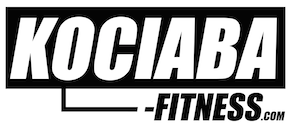The Five Pillars of Kettlebell Training
Article Categories
The following was written by Mike Mahler.
Many trainees often forget that kettlebells are weights and the rules of effective weight training apply to Kettlebell training. Similar to traditional weight training, effective kettlebell training requires a balanced approach and an emphasis on the basic compound drill that provide the most bang for the buck. For most trainees, following a regimen with a strong emphasis on a few basic exercises is the way to go. However, putting all of your efforts into one or two exercises long-term is not the way to go. There are five areas that are worth focusing on for balanced development. Lets get going.
The Five Pillars:
· Press
· Pull
· Squat
· Lower body pull
· Core
·
Whatever form of weight training you engage in, you want the five above areas covered. Now lets cover each area with kettlebells as the focus:
Press:
KB Military Press or KB Floor Press. This includes all of the variations such as the Sots Press, Double Clean and Press, Alternating Floor press, See-saw Press.
Pull:
Renegade Row, Alternating Bent-over Row, Double Bent-over Row, One-arm Row, Pull-ups with a kettlebell
Squat:
Double Front Squat, Hack Squat, overhead squat, one-legged squat
Lower body pull:
Double Swing, Double Snatch, One-arm Swing, One-arm Snatch, Double Clean, One legged Deadlift
Core:
Windmill, Turkish Get-up, Bent Press, Side Press
Covering the above five areas ensures that you build a strong and balanced physique. Many people tend to focus on what they enjoy and neglect what they do not care for. For example, people that like to press tend to spend a great deal of time on Military Presses and not enough time on pulling motions such as rows. When I first started training with kettlebells, I made the mistake of doing too much pressing work and pretty much no pulling work. Sure enough imbalances starting popping up followed by shoulder pain. Once I balanced the training with pulling motions, my shoulders felt better and more stable and my strength went up dramatically. If you feel that covering five areas is too complicated for you, then do not bother getting off the couch. Better yet, do not go out the door or drive on the road. You are a danger to anyone you come across.
Lets cover a few balanced kettlebell programs for different levels:
Beginner:
Here is a good program for a trainee that only has one kettlebell:
Monday-Wednesday-Friday
· One-arm Clean and Military Press 2x5 l,r (two sets of five left and right)
· One-arm Bent-over Row 2x6 l,r
· One-arm Windmill 1x3 l,r
· One-arm Front Squat 2x6 l,r
· One-arm Swing 2x10 l,r
·
Take one to two minute breaks in between each exercise and work on technique.
Intermediate:
Monday-Wednesday-Friday
· Double Clean and Military Press 2x6
· Double Bent-over Row 2x6
· Turkish Get-up 2x3 l,r
· Double Front Squat 2x8
· Double Swing 2x6
Take 90 second breaks in between each set.
Advanced:
Monday-Wednesday-Friday
· Sot Press 2x5 l,r
· Alternating Renegade Row 2x5 l,r
· Double Windmill 2x5 l,r
· Double Front Squat 2x6 (2 second pause at the bottom)
· Double Snatch 2x6
Take 90 second breaks in between each set.
The possibility of combinations, volume, intensity, and workouts splits is endless. All of this really depends on what your skill level is, your conditioning level is, and what your goals are. Whatever you do, make sure you cover the basics. Imbalanced programs are fine for more advanced trainees. If you are someone that has a high level of pushing strength and a low level of pulling strength, you can place pressing on maintenance mode and focus on pulling. The same can be applied to any imbalance. Regardless, you are far less likely to create imbalances if you focus on a balanced approach to training.
Reprinted from www.mikemahler.com



Add new comment